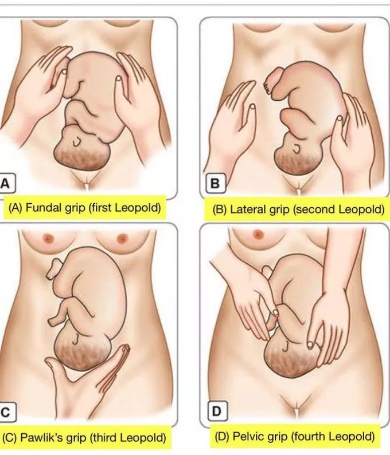A nurse is caring for a client who experienced a vaginal birth 12 hours ago. The nurse recognizes the client is in the dependent, taking-in phase of maternal postpartum adjustment. Which of the following findings should the nurse expect during this phase?
Eagerness to learn newborn care skills
Lack of appetite
Expressions of excitement
Focus on the family unit and its members
The Correct Answer is C
Choice A reason: During the taking-in phase, the mother is often passive and may not yet show eagerness to learn newborn care skills. This phase is more about recovery and processing the birth experience.
Choice B reason: Lack of appetite might be present immediately after birth due to the exertion and possible nausea, but it is not a defining characteristic of the taking-in phase. The mother's appetite usually returns as she begins to recover.
Choice C reason: Expressions of excitement are common as the mother relives the delivery experience and begins to bond with the baby. This emotional response is part of the taking-in phase, where the mother is focused on her own experience and the reality of becoming a parent.
Choice D reason: While the focus on the family unit is important, during the taking-in phase, the mother is primarily oriented to her own needs and recovery. The focus on family members and the broader family unit becomes more prominent in the subsequent taking-hold phase.
Nursing Test Bank
Naxlex Comprehensive Predictor Exams
Related Questions
Correct Answer is C
Explanation
Choice a reason:
Slightly below the umbilicus is not the expected location for the fundus at 22 weeks of gestation. Typically, the fundus is located at the level of the umbilicus at 20 weeks and rises about 1 cm above the umbilicus each week thereafter.
Choice b reason:
3 cm above the umbilicus would be more consistent with a gestational age of approximately 23 weeks, as the fundus rises approximately 1 cm per week after reaching the level of the umbilicus at 20 weeks.
Choice C rationale: At 22 weeks of gestation, the fundus is typically located slightly above the umbilicus. The uterus has grown sufficiently by this stage to reach this position, aligning with the expected fundal height measurements. This corresponds with normal pregnancy progression, as fundal height in centimeters is expected to approximate the gestational age in weeks.
Choice D rationale: By 22 weeks of gestation, the fundus has already risen above the umbilicus, so palpating the fundus 3 cm below the umbilicus is inconsistent with normal pregnancy progression. Earlier in pregnancy, such as around 16 to 18 weeks, the fundus might be found below the umbilicus, but this does not apply at 22 weeks.
Correct Answer is B
Explanation
Choice A reason:
The left lower quadrant is not typically where fetal heart tones are auscultated when the round, firm part of the fetus (usually the head) is palpated in the fundus and the long smooth surface (indicative of the back) is on the right side. Fetal heart tones are best heard through the back of the fetus, and in this position, the back is not located in the left lower quadrant.
Choice B reason:
The right upper quadrant is the correct location to auscultate fetal heart tones in this scenario. The Leopold's maneuvers suggest that the fetus is in a cephalic presentation with its back facing the right side of the mother's abdomen. Therefore, the fetal heart tones are most likely to be heard in the right upper quadrant, just below the level of the fundus.
Choice C reason:
The right lower quadrant is generally not the area to auscultate fetal heart tones if the fetus's back is on the right side and the head is in the fundus. The heart tones are typically higher up and closer to where the back is palpated.
Choice D reason:
The left upper quadrant would not be the correct place to find fetal heart tones given the described position of the fetus. With the back on the right side, auscultation on the left would not yield the clear heart tones expected.

Whether you are a student looking to ace your exams or a practicing nurse seeking to enhance your expertise , our nursing education contents will empower you with the confidence and competence to make a difference in the lives of patients and become a respected leader in the healthcare field.
Visit Naxlex, invest in your future and unlock endless possibilities with our unparalleled nursing education contents today
Report Wrong Answer on the Current Question
Do you disagree with the answer? If yes, what is your expected answer? Explain.
Kindly be descriptive with the issue you are facing.
